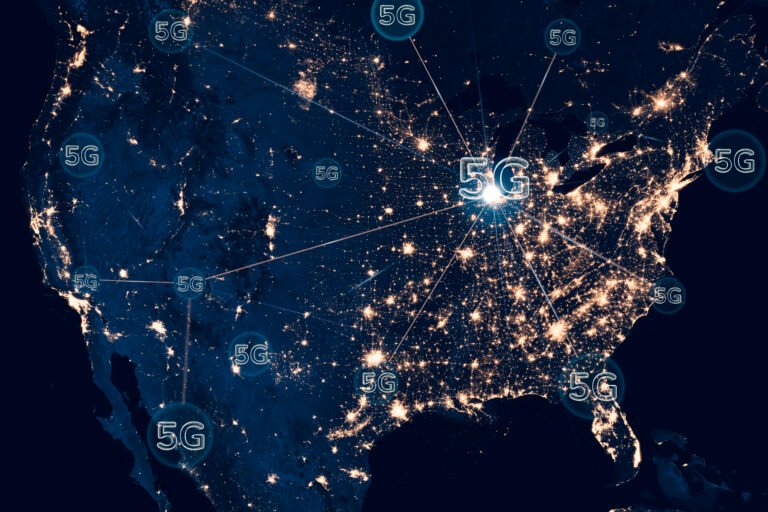8 Futuristic Jobs Created by the Satellite Boom

Futuristic Jobs: The Satellite Boom is more than flashy rocket launches and shiny constellations — it’s an industrial transformation that’s spawning entirely new roles and reshaping existing careers. As thousands of small, medium, and mega-constellation satellites (plus supporting ground networks and services) come online, demand is rising for specialists who can design, build, operate, protect, analyze, and monetize orbital systems and the data they produce. Expect opportunities across engineering, software, data science, space operations, law/regulation, and on-the-ground customer services — often blended into hybrid, futuristic job descriptions. Evidence of this rapid expansion shows in industry market growth, employment gains in the space sector, and major investments by firms building the infrastructure of a new space-enabled internet and data economy. space-economy.esa.int

Table of Contents
1 — Satellite Boom: the demand picture (quick snapshot)
The business lines driving hiring are primarily: broadband satellite internet (LEO NGSO constellations), Earth observation and analytics, in-orbit services (repair/refuel/inspection), satellite manufacturing & assembly, ground network expansion, and space traffic management. Market reports place satellite data services and on-orbit servicing as multi-billion-dollar industries growing at double-digit CAGRs — and governments and private firms are investing in manufacturing sites, ground infrastructure and semiconductor capacity to meet demand. For example, the Satellite Data Services market was valued in the low tens of billions in 2024 and expected to grow fast, while on-orbit servicing was already a multi-billion market in 2024 with high projected growth through the 2020s. These market tails are the core reason why the Satellite Boom is creating new, specialized jobs. Stellar Market Research
2 — Job 1: Constellation Systems Engineer
What they do: design and integrate entire satellite constellations — linking spacecraft bus selection, payload tradeoffs, orbital phasing, communications architecture, ground links, and lifecycle operations.
Why the Satellite Boom needs them: Mega-constellations (thousands of LEO satellites) require system-level planning to meet latency, coverage, regulatory and cost targets. Constellation engineers supervise mass manufacturing tolerances, onboard software architecture, intersatellite links, and failure-mode planning. Starlink, OneWeb, Kuiper and similar efforts are driving demand. Starlink
Skills & background: aerospace or systems engineering degree; experience with orbital mechanics, RF/comm links, telemetry & telecommand (TTC), systems modelling (STK, GMAT), and programmatic experience in manufacturing or operations. Soft skills: vendor management and risk modelling.
Typical employers: satellite operators, prime contractors, startups building NGSO constellations, government agencies.
3 — Job 2: On-Orbit Servicing & Robotics Technician (OOS Technician)
What they do: design, test, and operate robots and spacecraft that inspect, repair, refuel, or deorbit satellites — including tele-robotic control, autonomy stacks, grappling mechanisms, and proximity operations.
Why the Satellite Boom needs them: As constellations scale, servicing and life-extension reduce replacement costs and mitigate debris. The on-orbit servicing market was already valued in the low billions in 2024 and analysts forecast steady growth — creating demand for technicians and mission operators who can perform delicate in-space manipulations. Grand View Research
Skills & background: mechanical/robotics engineering, controls, ROS/autonomy frameworks, mission operations, real-time simulation, and testbed experience with hardware-in-the-loop. Certifications in safety and robotics (where available) are a plus.
Why this is futuristic: the job mixes astronautic mission ops with advanced robotics and remote-surgery-style precision — done from Earth or nearby telerobotic stations.
4 — Job 3: Space Traffic & Debris Analyst (Space Situational Awareness Specialist)
What they do: monitor orbital traffic, predict conjunctions, issue collision-avoidance maneuvers, and advise operators on orbital hygiene using telemetry, radar/optical tracking, and shared data services. They also feed automated avoidance systems with validated data.
Why the Satellite Boom needs them: traffic in popular LEO shells has exploded, requiring dedicated teams and AI/automation to avoid cascading collisions and to implement end-of-life disposal strategies. Governments, commercial SSA providers and constellation operators are hiring analysts and software engineers for this role. (Note: this is a fast-evolving field with public and private data sources.) space-economy.esa.int
Skills & background: orbital dynamics, signal processing, Python/Julia/C++, experience with tracking datasets (TLEs, radar/optical catalogs), machine learning for prediction, and operational decision making.
5 — Job 4: Edge-in-Space & Satellite Cloud Engineer
What they do: build software stacks that run close to the user — on or near the satellite or at distributed ground edge nodes — including edge compute, data routing, latency-optimized services, and integrations with cloud providers (hybrid satellite-cloud architectures).
Why the Satellite Boom needs them: the Satellite Boom isn’t only about pipes to the sky — it’s about delivering compute and data close to users (for gaming, industrial IoT, maritime logistics, emergency response). This role merges satellite comms with cloud-native engineering. Market growth in satellite data services and demand for low-latency apps generates these jobs. Stellar Market Research
Skills & background: cloud computing (AWS/Azure/GCP), networking (TCP/IP, LEO-specific routing), container orchestration (Kubernetes), edge frameworks, and a background in telecom architectures.
6 — Job 5: Ground-Network & Edge-Site Technician / Field Engineer
What they do: install and maintain ground terminals, user terminals, gateway stations, and edge sites; troubleshoot RF links; handle site permits and connectivity; and deploy last-mile equipment in remote or harsh environments.
Why the Satellite Boom needs them: large satellite internet rollouts and remote IoT deployments require thousands of terrestrial touchpoints — field engineers turn the constellation’s theoretical coverage into customer connectivity. SpaceX and others are investing in factories and ground infrastructure (and hiring locally) to scale manufacturing and terminal deployment. For instance, major investments have led to new manufacturing and semiconductor facilities that create hundreds of on-site jobs. San Antonio Express-News
Skills & background: RF fundamentals, grounding & power engineering, field safety, satellite terminal provisioning, and certifications in telecom installation.
7 — Job 6: Satellite Data Product Manager / Geospatial AI Specialist
What they do: translate raw satellite telemetry and imagery into marketable data products (crop analytics, maritime monitoring, insurance flood risk models, infrastructure change detection) using ML and domain expertise. They define product-market fit, pricing, and go-to-market plans.
Why the Satellite Boom needs them: explosive growth of high-cadence Earth observation and commercial data services means companies must create actionable, monetizable products from petabytes of satellite data. The Satellite Data Services market is growing rapidly, driving demand for geospatial AI specialists and product managers who can combine science, data engineering, and business strategy. Stellar Market Research
Skills & background: geospatial data processing (GDAL, EO toolkits), ML/AI for imagery, product management, domain knowledge (agriculture, insurance, maritime).
8 — Job 7: Spectrum, Regulation & Space-Policy Strategist
What they do: navigate frequency allocation, cross-border licensing, regulatory compliance, ITU filings, national approvals, and corporate strategy to secure spectrum and landing rights. They also shape policy on space traffic, export controls, and data sovereignty.
Why the Satellite Boom needs them: regulatory barriers and spectrum scarcity are major constraints on scaling constellations and services — skilled policy strategists shorten time-to-market and mitigate geopolitical risks. The complexity increases when systems require approvals in multiple countries or when services touch critical infrastructure. space-economy.esa.int
Skills & background: telecom regulation, international law, policy analysis, negotiations experience with national regulators and multilateral bodies.
9 — Job 8: Satellite Security & Cyber Resilience Lead
What they do: secure space and ground assets from cyber threats, ensure firmware and communication chains are hardened, implement cryptographic key management, and design intrusion-detection for space assets. They also develop contingency plans for jamming, spoofing, and supply-chain attacks.
Why the Satellite Boom needs them: more satellites and more user terminals increase the attack surface — cybersecurity roles tailored to spacecraft and ground networks are emerging as mission-critical. Agencies and operators are investing in resilience programs to protect communications, navigation and data integrity. Recent debates about privatization of certain services and national security highlights underscore the need for robust security practices across commercial and public systems. The Guardian
Skills & background: cybersecurity (embedded systems), secure comms, firmware security audits, threat modelling, and experience with cryptography and PKI for constrained devices.
Quick related-items / info table (hire map)
| Job title | Core skills | Example employers | Why Satellite Boom needs it |
|---|---|---|---|
| Constellation Systems Engineer | Orbital mechanics, RF, systems engineering | SpaceX, OneWeb, Blue Origin, startups | Design/scale NGSO constellations |
| On-Orbit Servicing Technician | Robotics, autonomy, mission ops | Astroscale, Northrop/Maxar spinouts | Repair & life extension reduces replacement cost |
| Space Traffic Analyst | Orbital dynamics, ML, tracking | LeoLabs, government SSA, operators | Avoid collisions with crowded LEO shells |
| Edge-in-Space Engineer | Cloud, networking, SDKs | Cloud providers, satellite-ISPs | Low latency services & edge compute |
| Ground Technician | RF install, field ops | ISPs, integrators, local installers | Deploy user terminals & gateways |
| Geospatial AI Product Manager | EO, ML, product strategy | Planet Labs, Maxar, startups | Convert imagery into revenue |
| Spectrum & Policy Strategist | Telecom law, ITU filings | Regulators, operator policy teams | Secure filings & cross-border approvals |
| Satellite Security Lead | Embedded security, crypto | Operators, primes, security firms | Protect systems from cyber & interference |
Tips for entering these careers — practical roadmap
- Build a relevant portfolio. For data/product roles, build open projects: crop NDVI workflows, vessel-tracking demos, or change-detection models using publicly available imagery. For engineering roles, contribute to open hardware/software projects or create CubeSat subsystems in university clubs.
- Learn the tools employers use. STK/GMAT for orbits, ROS for robotics, GDAL and EO toolkits, Kubernetes for edge, Python and C++ for performance systems.
- Get domain-specific credentials. Certificates in cloud platforms, RF safety, or security (CISSP for security leads; vendor cloud certs for edge engineers).
- Network with the ecosystem. Attend space/EO conferences, join industry working groups (SSA, spectrum forums), and contribute to standards discussions.
- Start local and scale global. Many satellites companies recruit locally for manufacturing, assembly, and field deployment — use those entry points to move into higher-value roles. (Large facility investments often create hundreds of local roles.) San Antonio Express-News
FAQs
1. Are these jobs realistic or just hype?
Real. Multiple market reports show strong growth in satellite data services and on-orbit servicing; employment in the space sector also rose in recent years. Still, not every company will scale perfectly — some incumbents face restructuring — so be selective about employer stability. Reuters+3Stellar Market Research+3Global Market Insights Inc.
2. Do I need an aerospace degree to work in the Satellite Boom?
Not always. Many roles (product, cloud/edge, data science, cybersecurity) value computer science, EE, or domain experience. For hardware/mission roles, aerospace or mechanical backgrounds help, but hands-on experience (CubeSats, robotics clubs, internships) can substitute.
3. What geographic regions have the most openings?
The U.S., parts of Europe, and emerging clusters in Canada, UK, and selected Asia/Pacific countries host many firms and manufacturing sites. However, remote field roles and ground-network work can appear globally as operators expand coverage. Recent factory and semiconductor investments in the U.S. show localized hiring spurred by corporate expansions. San Antonio Express-News
4. How should I position my resume?
Tailor it to the job: highlight relevant projects (e.g., mission control simulations, geospatial models, edge-computing deployments), quantify outcomes, and show cross-disciplinary collaboration. For early career applicants, emphasize practical labs, internships, and open source contributions.
5. Which roles pay best?
Senior engineering leads, security architects, and product directors typically command the highest pay — but compensation varies widely by company, location, and whether the firm is venture-backed or government-sponsored. Use market salary tools and speak to recruiters for up-to-date ranges.
6. Is the Satellite Boom sustainable long term?
The trend has strong tailwinds — terrestrial connectivity needs, IoT expansion, high-cadence Earth observation, and new in-orbit services — but it faces regulatory, spectrum, and financial hurdles. Expect volatility and consolidation; resilient skills (software, data, security) will remain valuable.
7. How quickly can I switch into one of these jobs?
With targeted learning and a strong project portfolio, specialists can move in within months; hardware and mission ops roles often take longer due to the need for lab access and safety training.
Quick reality check: growth and disruption
The Satellite Boom is real but not uniformly positive. Industry reports highlight fast growth in broadband and data services, but incumbents are under pressure — some prime contractors have reorganized or cut jobs to adapt to shifting demand. That both means opportunities (new startups, new specializations) and caution (choose employers with clear business models). Examples of growth (data services, on-orbit servicing market forecasts) and of restructuring (major aerospace firms adjusting workforce plans) underline the mixed landscape. Stellar Market Research+2Global Market Insights Inc.
Conclusion — how to ride the Satellite Boom
The Satellite Boom is spawning hybrid, high-impact careers that blend aerospace fundamentals with software, data, robotics and policy. Whether you aim to design a constellation, operate a fleet of service robots, or deliver AI-driven geospatial products, the new space economy rewards cross-disciplinary skills, hands-on portfolios, and the willingness to learn fast. Start by choosing one job family above, build a demonstrable project or contribution, network, and apply to targeted openings — you’ll find the Satellite Boom offers routes into a cutting-edge industry that’s only getting started.






